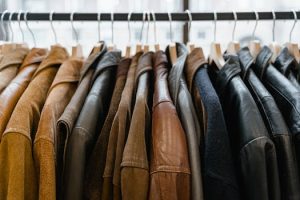California’s PFAS Ban: Redefining Safe Apparel Standards
With an increasing focus on sustainability and safety, California has recently passed a groundbreaking ban on per- and polyfluoroalkyl substances (PFAS) in apparel. This move marks a significant step towards redefining safe apparel standards and protecting consumers from the potential health hazards associated with PFAS chemicals. As one of the largest and most influential states in the US, California’s PFAS ban is expected to have far-reaching effects on the apparel industry, not just within the state, but also on a national level.
What are PFAS chemicals?
Per- and polyfluoroalkyl substances, commonly known as PFAS, are a group of man-made chemicals that have been used in a variety of consumer products, including apparel, due to their water and stain-resistant properties. These chemicals are also found in firefighting foam, food packaging, cookware, and many other everyday items.
Despite their widespread use, PFAS chemicals have been linked to a range of health issues, including cancer, thyroid disease, and reproductive and developmental problems. The concerns surrounding these chemicals have prompted several countries, and now California, to take action to restrict their use in consumer products.
The impact of PFAS on the apparel industry
The fashion industry is known for its heavy use of chemicals and unsustainable practices, and PFAS is just one example of this. These chemicals are often used in the production of waterproof and stain-resistant clothing, such as rain jackets and activewear. However, as consumers become more conscious of the impact of their purchases, there is a growing demand for greener and safer alternatives.
California’s PFAS ban is expected to have a major impact on the apparel industry, as manufacturers will have to find alternative methods to achieve water and stain resistance in their products. This will require a significant shift towards more sustainable and environmentally friendly practices, which will not only benefit the health of consumers but also the planet.
Why this ban is a game-changer
California’s PFAS ban is considered a game-changer, not just because of its potential influence on the apparel industry, but also because of the stricter regulations it sets for chemical use. The ban includes a wide range of PFAS chemicals, including some of the newer generation varieties, which were previously allowed in other states. This means that apparel companies will have to comply with even more stringent standards when it comes to chemical use in their products.
Moreover, the ban also requires companies to disclose the use of any PFAS chemicals in their products, making it easier for consumers to make informed choices about their purchases. This transparency and accountability will undoubtedly have a ripple effect in the industry, paving the way for more sustainable and ethical practices.
The potential challenges for the apparel industry
While the California PFAS ban is a positive step towards a safer and more sustainable future, it also presents some challenges for the apparel industry. The main concern is the availability of alternative chemicals and materials that can provide the same level of water and stain resistance without compromising the safety of consumers or the environment.
Manufacturers will have to invest in research and development to find new ways to produce functional and fashionable apparel without the use of harmful chemicals. This may result in higher production costs, which could then be passed on to consumers. However, with the rising demand for sustainable and ethical products, the investment is ultimately worth it in the long run.
The future of safe apparel standards
California’s PFAS ban is just the beginning of a much-needed shift towards safer and more sustainable apparel standards. With more and more states, and even countries, implementing similar regulations, the apparel industry will undoubtedly undergo significant changes in the coming years.
Consumers have the power to drive this change by choosing to support companies that prioritize their health and the environment. As the demand for safer and greener products continues to grow, the industry will have no choice but to adapt to safer and more sustainable practices.
In conclusion
California’s PFAS ban is a step in the right direction towards redefining safe apparel standards and promoting a more sustainable fashion industry. While there may be challenges for manufacturers, the ultimate goal is to protect consumers and the planet. This ban sets a precedent for other states and countries to follow, and hopefully, it will inspire more positive changes in the industry in the years to come.




